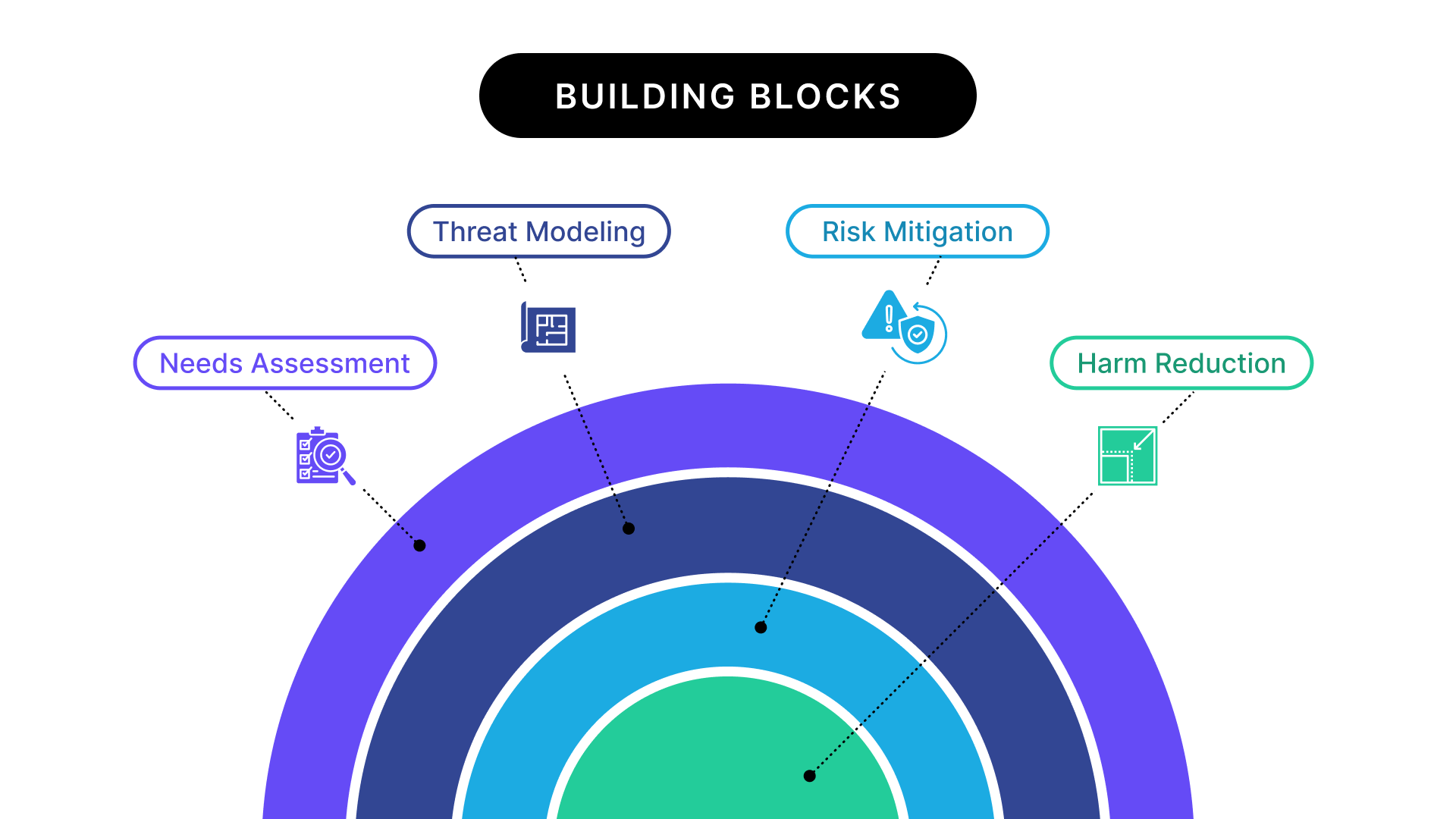Holistic Assessment Approach
Most relevant for 💭 Visionaries, 🔥 Advisors and 🔍 Technical Evaluators
Holistic technical assessments are comprehensive reviews that examine an organization or system in its entirety, rather than focusing on specific components in isolation. The goal of a holistic assessment is to understand the interconnections and overall functioning of all aspects of the entity being reviewed. This approach ensures that all relevant factors are considered, leading to more thorough and meaningful insights.
In the Process section you will…
- Learn about our methodology for engaging in Holistic Technical Assessments
- Reflect on useful building blocks to employ
- Take a deep dive into the Holistic Assessment components, with an example timeline of steps
- Be provided a list of recommended skillsets or expertise we suggest using
- Access to a Sample Quality Technical Assessment Template (available for download)

The Building Blocks
As a foundation to this process, we begin by reflecting upon useful building blocks that should be both employed by an assessment, and in the solution being assessed.
Needs Assessment
Needs assessment is a process of identifying and analyzing the needs of a specific group of users or stakeholders in order to determine the best course of action to meet those needs. In the context of software development, a needs assessment is an important part of the planning phase of the project. It involves gathering and analyzing data about the users or stakeholders who will be using the software, as well as their needs and requirements.
Threat Modeling
Threat modeling is a process of identifying, analyzing, and prioritizing the potential security threats and vulnerabilities in a software system. It is an important part of the software development process because it helps to ensure that the software is designed and implemented in a way that is secure and resistant to attacks.
Risk Mitigation
Risk mitigation is the process of designing, implementing, and otherwise taking steps to reduce or eliminate identified risks in a software development project. It is an important part of the software development process because it helps to ensure that the project is delivered on time, within budget, and with a high level of quality.
Harm Reduction
Harm reduction is a public health approach that focuses on reducing the negative consequences associated with risky behaviors, rather than attempting to eliminate the behaviors themselves. In the context of software development, harm reduction may refer to the process of designing and implementing software in a way that minimizes the negative impact a user or compromise may have upon themselves, other users, data, or the system as a whole.